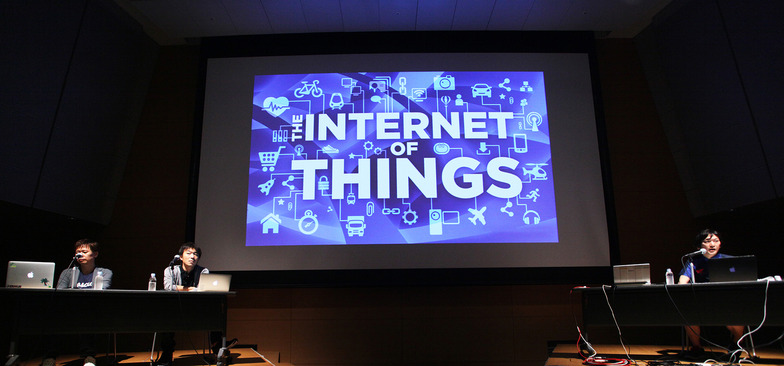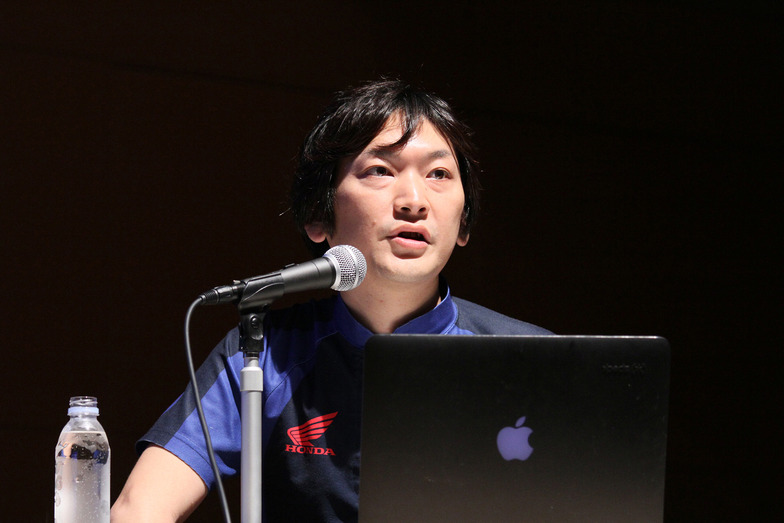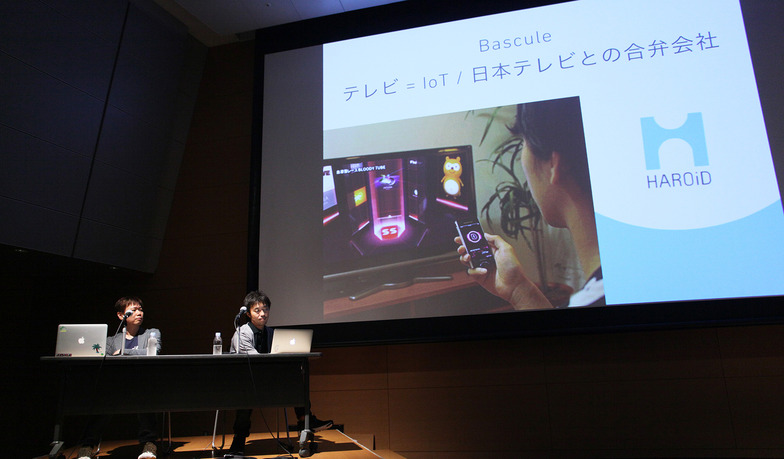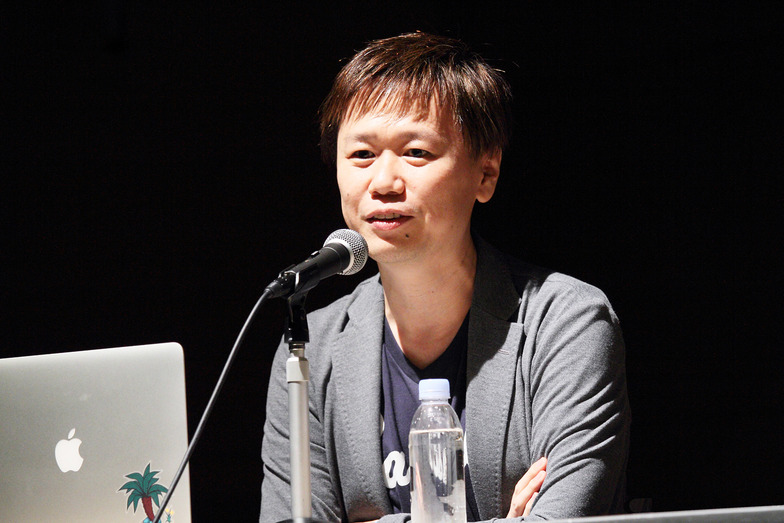The term IoT (Internet of Things) is gaining attention, and digital creative is undergoing a major transformation.
Bascule, which has realized over 20 participatory program concepts in four years centered on the theme of TV × Interactive, has established " HAROiD," a joint venture with Nippon TV focused on smart TVs and smart devices as its main business field.
SIX, a creative agency spun off from Hakuhodo, developed the next-generation " Lyric Speaker " and was selected as the first Asian company to win an award in the Entertainment & Content Technology category at this year's SXSW.
PARTY, which has pursued interactive and digital-driven creativity, is also developing IoT content.
Three representatives from digital creative companies—Bascule's Masayoshi Park, SIX's Takeshi Nozoe, and PARTY's Hiroki Nakamura—came together to discuss creativity in the IoT era, breaking free from traditional client work to advance new initiatives. We present their discussion in two parts.

(From left) Masayoshi Park, Hiroki Nakamura, Takeshi Nozoe
Why is an agency tackling IoT?
Nakamura: I don't think "IoT" is just a passing trend. There are two reasons for this.
First, Bluetooth enables extremely low-power data exchange with smartphones, allowing all computation to happen on the phone side. This means we can build things without high costs.
Second, systems now exist where you can control motors with just a few lines of programming. Thanks to these two factors, anyone with an idea can now prototype it.
Recently, even advertising agencies are getting involved in IoT, right? At PARTY, we're currently developing a toothbrush that connects to the internet. It's a toothbrush that makes brushing fun with interesting features, like letting you defeat monsters on a game screen on your device when you brush.
Today, I'd like to hear from both of you about how agencies can engage with IoT in interesting ways, and how television might transform through IoT.
Nozoe: SIX's keyword is "Updating Experiences." Our Lyrics Speaker, which displays song lyrics, is themed around "Updating the Music Experience."
Now, music has become more accessible through subscription services, and sound quality keeps improving with high-resolution audio.
So, what's the next update for the music experience? While digital audio sources offer various conveniences, we noticed that the way of listening where you really feel and absorb the "lyrics" is decreasing. We created it with the idea that if we could update that way of listening – holding the lyric sheet while listening to music – in a new way unique to the digital age, we could experience music more deeply.
Nakamura: So, are you planning to sell this through SIX?
Nozoe: We're selling it to get as many people as possible to experience it. That's just the first step.
Our goal is to spread this experience to music lovers worldwide, and from there, we plan to integrate with various services.
Nakamura: The Lyric Speaker's transparent display is really cool, right? The way the lyrics are displayed, the font choices, and how they move – it's incredibly emotional.
Nozoe: The lyrics are displayed in real-time with the optimal design, matching the song's mood. This was made possible because a Japanese research institute was developing world-leading technology to analyze songs, including their mood. Using this data, we can do things like make the lyrics pop up big during the chorus or switch to a handwritten font for mellow tunes.
Right now, we display it on the speaker's screen, but maybe we could show it on TV or project it. We're building it thinking that such a platform could become a media platform itself.
Nakamura: Why did IoT come from an agency like SIX?
Nozoe: When I was a judge at Cannes Lions in 2013 , I heard a talk by Bob Greenberg, president of R/GA, which created the NIKE+ FuelBand, and I was really shocked.
He said, "We want to make the act of running itself an experience that connects people." I realized that agencies could work with clients to rapidly change the real world.
Since then, I've been saying, "That era will come to Japan too!" but things haven't changed much. I always included at least one such proposal in my proposals to clients, but they were never adopted in campaign ideas.
That frustration exploded, and I thought, "Then let's make it ourselves," and that's how we developed the Lyric Speaker.
What can IoT-enabled TVs do?
Nakamura: Basquille, where Mr. Park serves as CEO, has long been working on making TV interactive and just established a joint venture with Nippon TV called HAROiD.
Park, what exactly does HAROiD do?
Park: HAROiD is a company focused on building businesses for a new era of television that goes beyond its traditional role. When we launched Basquille in 2000, we were fired up, thinking, "We're going to flip TV upside down with the web!"
But around 2007, people started saying, "Young people don't use PCs anymore..." Since our company was Flash-centric at the time, the rise of smartphones—which didn't support Flash—made us feel a huge sense of crisis.
But ultimately, Basquille's goal was to gather a huge audience and deliver an intense interactive experience! That's when we started thinking, "Maybe we can do something amazing on TV, not just PCs."
Two years ago, we independently developed the participatory TV platform "M.I.E.S." (pronounced "Meez"). M.I.E.S. is a system that processes vast amounts of previously untapped interactive data—the emotions of viewers nationwide sitting in front of their TVs—in real-time alongside the broadcast program.
This enables various forms of entertainment, like real-time matchmaking shows where viewers participate, or programs where everyone plays a giant Space Invaders game by rapidly pressing buttons together.
Nakamura: Since what's broadcast on TV is basically the same for everyone, making that an interactive experience is quite challenging, right?
Park: It's hard to imagine, but the real challenge is synchronizing the TV broadcast with millions of smartphones across the country without any time lag.
Even a one-second delay would make it feel "too slow!" and ruin the entertainment value.
While I've focused on entertainment development, another team member is developing "JoinTown," a welfare service for aging communities facing depopulation. It links internet-connected TVs with residents' personal information. For example, if an earthquake occurs, messages like "Ms./Mr. [Name], evacuate immediately!" appear on the TV, displaying evacuation advisories alongside the person's name. Whether someone evacuated can also be registered and shared by swiping their ID card at the evacuation site.
I had no idea such an amazing service was being developed right under my nose (laugh).
By treating the TV as an IoT device, I believe it becomes possible to display personal information on public TV screens.














